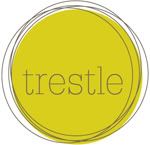
When working with our emergent readers, what's the most common strategy we offer them?
'Sound it out!'
Though that is sometimes a helpful strategy, we have to give out children better tools than that! The English language is such that 'sound it out' just doesn't make sense a lot of the time.
At the beginning of the 2nd grade year, I taught the children a new reading strategy each day and then we posted them all in the classroom for a reference. After Reading Workshop time, the students shared examples of how they used their reading strategies to solve problems in their reading that day. It amazed me how well these strategies worked, how well the children understood and applied them in their reading, and how they made the students feel empowered.
Today I get to share a few of those strategies with you. And. AND! Our dear designer, Emily Yates, has designed some snappy new posters for you to print, color (if you desire), and hang in your reading area. How happy is that?! (Thanks, Emily!)
So HERE is your free, printable pdf.
And here are the reading strategies, with a few explanations:
'Sound it out!'
Though that is sometimes a helpful strategy, we have to give out children better tools than that! The English language is such that 'sound it out' just doesn't make sense a lot of the time.
At the beginning of the 2nd grade year, I taught the children a new reading strategy each day and then we posted them all in the classroom for a reference. After Reading Workshop time, the students shared examples of how they used their reading strategies to solve problems in their reading that day. It amazed me how well these strategies worked, how well the children understood and applied them in their reading, and how they made the students feel empowered.
Today I get to share a few of those strategies with you. And. AND! Our dear designer, Emily Yates, has designed some snappy new posters for you to print, color (if you desire), and hang in your reading area. How happy is that?! (Thanks, Emily!)
So HERE is your free, printable pdf.
And here are the reading strategies, with a few explanations:
Most of the time they will get the challenging word immediately based on the context of the rest of the sentence.
2.Look and listen for letter patterns
I think this is the most used strategy! The pictures! Use the pictures!
5. Does it make sense?
7. Backtrack--read it again
Example: 'winter' has the word 'in' inside it. Little tricks like that make a big difference.
-Anne
*** Swetbeets winner below! ***
*** Swetbeets winner below! ***







8 comments:
These are interesting. I have no idea what level my daughter is reading at (but now I'm guessing 1st or 2nd grade?--she can pick out any book from the children's section library and read it by herself--her favorites are Berenstain Bears), but her problem is she'll see the letters all together, and assume it's a word she already knows, even though it's slightly different. (Like yesterday she read "manager" as "manger.") I listen as she's reading so that I'M hearing it in context and can coax her back to correcting the word. Now I can use the "Does it make sense?" to help her out, now. Thanks.
A friend referred me to your blog, and it's AMAZING! I wish I wasn't a student so I had time to see if I had any creative juices flowing in me!
Anyway, my friend has a sewing blog I thought I'd pass along...
www.cluckclucksew.com
I just adore your blog and wanted to let you know you've been nominated for the Best Blog Award. You can find my post here: http://goodie-goodie-gumdrops.blogspot.com/2009/11/blog-awards-im-feelin-love.html
Keep up the good work!
Fantastic! It took me a while to realize that my oldest had no idea what it meant when I said, "Sound it out!" Guess the strategies used 30 years ago (YIKES!)when I was learning to read are a little antiquated...
I want to modge podge your signs onto some funky canvases and hang them over the bookcase! How cute would that be?
FREE designs from Emily Yates! That in and of itself is enough motivation for me to print them out (b/c they're so fun!) and work on this with James.
Thanks, Emily Y and Anne for sharing your expertise with us :)
I'm so glad you posted this, Anne. I remember reading on one of your other blogs a while back about how you were glad to have been a teacher so you could offer your kids better instruction than "sound it out" when teaching them to read (or something like that), and I often think about that when I'm reading with Benjamin and wish that I knew what you knew! Now I do, and I hope I can use it well when my kids start reading!
LOVE this! Thank you
This is great! I am teacher, as well, and just did a post on reading on my blog. Teaching kids general strategies like this (and not phonics!) works within a whole language approach to promote reading comprehension and enjoyment! Love the poster - will use it if I ever teach bigger kiddos!
Post a Comment